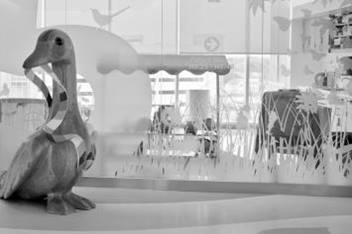Respiratory Distress Syndrome: Newborn


Respiratory distress syndrome (RDS) occurs in babies born early (premature) whose lungs are not fully developed. The earlier the infant is born, the more likely it is for them to have RDS and need extra oxygen and help breathing.
RDS is caused by the baby not having enough surfactant in the lungs. Surfactant is a liquid made in the lungs at about 26 weeks of pregnancy. As the fetus grows, the lungs make more surfactant.
Surfactant coats the tiny air sacs in the lungs and to help keep them from collapsing (Picture 1). The air sacs must be open to allow oxygen to enter the blood from the lungs and carbon dioxide to be released from the blood into the lungs. While RDS is most common in babies born early, other newborns can get it.
Those at greater risk are:
- Siblings that had RDS
- Twin or multiple births
- C-section (cesarean) delivery
- Mother that has diabetes
- Infection
- Baby that is sick at the time of delivery
- Cold, stress, or hypothermia. Baby cannot keep body temperature warm at birth.
Signs and Symptoms
Babies who have RDS may show these signs:
- Fast breathing very soon after birth
- Grunting “ugh” sound with each breath
- Changes in color of lips, fingers and toes
- Widening (flaring) of the nostrils with each breath
- Chest retractions - skin over the breastbone and ribs pulls in during breathing
Diagnosis
The diagnosis is made after examining the baby and seeing the results of chest X-rays and blood tests.
Treatment
Oxygen - Babies with RDS need extra oxygen. It may be given several ways:
- Nasal cannula: A small tube with prongs is placed in the nostrils.
- Continuous Positive Airway Pressure (CPAP): This machine gently pushes air or oxygen into the lungs to keep the air sacs open.
- Ventilator (for severe RDS): This is a machine that helps the infant breathe when they cannot breathe well enough without help. A breathing tube is put down the infant’s windpipe. This is called intubation (in-too-BAY-shun). The infant is then placed on the ventilator to help them breathe.
Surfactant - Surfactant can be given into the baby’s lungs to replace what they do not have. This is given directly down the breathing tube that was placed in the windpipe.
Intravenous (IV) catheter treatments - A very small tube called a catheter, is placed into one or two of the blood vessels in the umbilical cord. This is how the infant gets IV fluids, nutrition and medicines. It is also used to take blood samples.
Medicines - Sometimes antibiotics are given if an infection is suspected. Calming medicines may be given to help ease pain during treatment.
Warning
- The medical device tubing can get wrapped around a child’s neck. This can lead to choking (strangulation) or death.
- DO NOT leave the medical device tubing where infants or children can get tangled up in it.
- Talk to your child's health care provider:
- If your child has been tangled in their tubing before.
- To learn steps you can take to help make sure the tubing does not get wrapped around your child’s neck, such as keeping the tubing away from the child as much as possible.
- Any other concerns you may have about the risk of strangulation from medical device tubing.
- If your child is injured by the medical device tubing, please report the event to the FDA. Your report can provide information that helps improve patient safety. The website to make a report is: https://www.accessdata.fda.gov/scripts/medwatch/index.cfm?action=reporting.home
What to Expect
The road to recovery is different for each infant. Often RDS gets worse before it gets better. Some babies need more oxygen than others. Some may require a treatment of surfactant. As the baby is able to breathe better, they may need less oxygen and other help to breathe.
How to Know if Your Infant is Getting Better
Here are some signs that your baby is getting better. They will:
- Breathe easier and more slowly and look more comfortable breathing.
- Need less oxygen.
- Have the settings lowered or decreased, if using a CPAP or on a ventilator. After a while, help from the machines will no longer be needed.
HH-I-267 ©2011, Revised 2022, Nationwide Children’s Hospital

